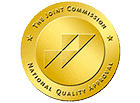From 2018 to 2020, the Vista Research Group recorded guest attendance within their treatment network, noting the addiction rates and primary drug of choice driving each individual’s substance use disorder. Their data detailed a notable shift in the leading drug of choice of guests participating in drug and alcohol rehabilitation.
How Did Addiction Rates Change From 2018 to 2020?
Within three years, the percentage of heroin and opioid use declined from approximately one-third of all guests to 22%. During that time, the percentage of guests reporting alcohol use disorder (AUD) increased from 37% to exactly half of all substance use disorders (SUD) reported in guests of addiction treatment programs.
While guest-reported substance use disorders may vary between treatment locations, the over-arching data trend is supported by Vista’s research.
Surprisingly, the long-awaited decrease in opiate and heroin use has arrived. From 2018 to 2020, cases reporting opiate use disorder dropped by 2%, and heroin cases dropped by 8%.
While the drop in opioid use is a positive development, it seems that in its place is an overwhelming escalation in alcohol use disorder amongst guests in abstinence-based addiction treatment centers. Vista’s research supports this as alcohol addiction increased from 37% to 50%, a 13% escalation in AUD.
What Causes Addiction Rates To Change?
The onslaught of Covid-19 has resulted in worldwide trauma, affecting the lives of everyone across the globe. As a result, the natural progression of self-isolation, state-wide lockdowns, and other pandemic-related stressors led to the deterioration of America’s mental health.
Those at Vista Research Group found that 3 factors contribute to the shift in the addiction rates of guests entering rehab. We at Royal Life Centers agree with for substance use disorders have shifted from opioids and heroin to alcohol.
Why Did More People Enter AUD Treatment for the First Time in 2020?
Why Did Opioid Use Disorder Rates Decline in 2020?
As such, the availability of significantly stronger opioids on the street today poses a highly increased risk for potential overdose. Due to the recent influx of fentanyl and fentanyl-laced drugs, the potential for drug overdose in individuals with patterns of casual or addictive use is considerably higher than three years ago. In fact, the CDC’s 2019 National Drug Overdose data reported ~73% of opioid overdose deaths involved synthetic opioids.
In spite of this tragic news, there has been positive change regarding the overprescribing of opiate pain relievers, lowering the accessibility of opiates within the street market. For instance, SAMHSA’s 2019 National Survey on Drug Use and Health supports an impactful decrease in opiate pain reliever prescriptions over the last 10 years. This, in turn, indicates the reduced number of opioid users.
Availability of MAT for Opioid Use Disorder Lowers Addiction Rate
The most common forms of medication-assisted treatment, treat opioid use disorder through maintenance programs. Considering the historically recent support of MAT within the addiction treatment community, medication-assisted treatment practices only just entered the addiction treatment field.
Access to Quality Addiction Treatment Saves Lives
Now that more addiction treatment methods are accessible, most individuals suffering from opioid use disorder are willing to seek treatment. Many people prefer MAT rather than abstinence-based treatment, so the accessibility to alternative treatments makes all the difference. With that, the choice to recover from an opioid dependency is no longer “all or nothing.”
The option to enter a MAT program lessens the pre-treatment fears that prevent many from seeking treatment. For this reason, people with opioid use disorder are more willing to seek treatment with MAT, lowering the addiction rates.
Our Medication-Assisted Treatment Program
Royal Life Centers offers medication-assisted treatment (MAT) services for individuals with opioid use disorder. MAT is a type of medication-based intervention that combines medications such as buprenorphine or naltrexone to ease withdrawal symptoms while providing counseling and behavioral therapies.
Our MAT program utilizes research-based medications, individualized treatment plans, and collaborative care from our multidisciplinary team. We aim to provide comprehensive, person-centered care that works toward your recovery goals.
With MAT, you can gain relief from opioid cravings and withdrawal symptoms, while developing new coping skills to help manage triggers in a healthy way. Medication-assisted treatment is the most effective form of treatment for opioid use disorder—it has been shown to reduce relapse rates, reduce mortality rates, and improve quality of life.
Interested in more information on addiction rates and substance abuse trends? Check out our in-depth collection of Addiction Facts and Statistics.
Joining Treatment At Royal Life Centers
We are here to help you get the care you need to start on your journey toward recovery. With our team’s guidance and support, we believe that lasting changes can be made in your life.
If you or a loved one is struggling with opioid use disorder, please reach out to us today by calling 877-RECOVERY. We are here to help provide the treatment and resources needed to create a new life in recovery.
A big thanks to Vista Research Group for its tireless efforts to provide the addiction treatment community with information-rich research that enables comprehension, awareness, and perspective on addiction treatment trends that can benefit treatment practices for our wonderful guests.




